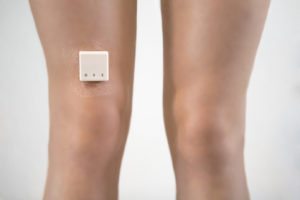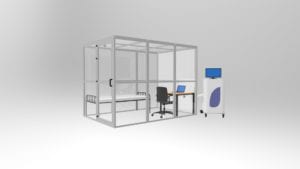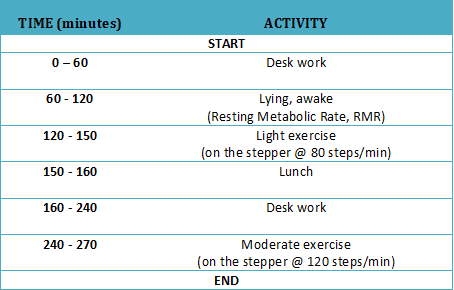Physical activity and health
Increasing levels of physical activity is a central focus for global health initiatives. Apart from convincing evidence-based results which showed that increasing one’s physical activity has multiple beneficial health effects for people of all ages, the importance of physical activity has become more apparent as obesity rates and metabolic diseases increase worldwide (Ng et al., 2014). Physical activity is defined as bodily movement brought about by contraction of skeletal muscles that results in an increase in energy expenditure above resting levels (Caspersen, Powell, & Christenson, 1985), Given that, the ability to assess energy expenditure for different activities is important. Furthermore, identifying behavior risk factors in free-living individuals is essential in the prevention and control of non-communicable diseases such as metabolic diseases.
Measurement with activity monitor and indirect calorimetry
Physical activity monitors
The MOX is a medical grade, accelerometer-based wearable physical activity monitor that has been validated for the measurement of various levels of activity in healthy persons, elderly and patients with a chronic condition. Physical activity can be categorized according to type of activity (sitting/ standing/ lying) and intensity (counts/sec).
Room calorimeters
 Maastricht Instruments offers various room calorimeters for different needs. The latest development, the Room calorimeter basic is a state of the art indirect calorimetry system that can be assembled in a matter of hours. It provides an ideal solution for researchers with cost and space constraints. The complete system comprises of the room and its state of the art metabolic cart, the Omnical. Without the need for a mask or hood, it can be used for a wide variety of metabolic studies without movement restrictions. Undergone rigorous testing and validation, the system provides users with highly precise measurements.
Maastricht Instruments offers various room calorimeters for different needs. The latest development, the Room calorimeter basic is a state of the art indirect calorimetry system that can be assembled in a matter of hours. It provides an ideal solution for researchers with cost and space constraints. The complete system comprises of the room and its state of the art metabolic cart, the Omnical. Without the need for a mask or hood, it can be used for a wide variety of metabolic studies without movement restrictions. Undergone rigorous testing and validation, the system provides users with highly precise measurements.
A study example
Physical activity measured by the MOX activity monitor was compared against energy expenditure estimated by the Room calorimeter basic for various common activities: lying, desk work, light and moderate exercise (stationary stepper) and having a meal (Lunch).
Oxygen uptake (VO2 ), carbon dioxide produced ( VCO2 ), and the respiratory quotient (graph not shown) were determined in 1-min intervals with the system. Energy expenditure (EE) is calculated by Weir’s formula (Weir, 1949) as follows:
Energy expenditure (kcal) = 3.941 × VO2 (L)+ 1.106 × VCO2 (L)
Physical activity intensity is displayed as number of activity ‘counts’ per second derived from accelerometer data.
Energy expenditure during different activities
The Room calorimeter basic system showed good response time and sensitivity in measuring oxygen uptake and carbon dioxide produced by the participant in response to energy needs for various activities. As shown in Figure 2, energy expenditure derived from O2 and CO2 measurements inside the room correlated with activity intensity derived from accelerometry data.
Depending on the demands of activities, energy expenditure varied from 1084 to 6507 kcal/day. A similar trend was seen with physical activity (counts) estimated by accelerometry from 0 to 834.

Thermic effect of food
The thermic effect of food or dietary induced thermogenesis after having a meal can be studied. With reference to Figure 1, this is presented as higher energy expenditure values compared to performing the same activity (deskwork) before having the meal.
Instruments for research
In close cooperation with NUTRIM at Maastricht University, Maastricht Instruments delivers systems and devices for measuring energy expenditure, sports performance and physical activity. Examples are the indirect calorimetry systems such as the Whole Body Room Calorimeter, Omnical metabolic cart, as well as physical activity monitors.
R & D techniques and applications
The Room calorimeter basic provides an attainable solution for the objective study of human energy expenditure in a free-living condition without traditional hood or mask constraints. The MOX physical activity monitors can give a good estimate of activity intensity, and is a great tool for epidemiological studies and for identifying lifestyle risk factors.
Discover what Maastricht Instruments can do for you by visiting our website here.
For questions, comments, ideas or information, please feel free to contact us.
References
Caspersen, C. J., Powell, K. E., & Christenson, G. M. (1985). Physical activity, exercise, and physical fitness: definitions and distinctions for health-related research. Public Health Rep, 100(2), 126-131.
Ng, M., Fleming, T., Robinson, M., Thomson, B., Graetz, N., Margono, C., . . . Abera, S. F. (2014). Global, regional, and national prevalence of overweight and obesity in children and adults during 1980–2013: a systematic analysis for the Global Burden of Disease Study 2013. The lancet, 384(9945), 766-781.
Weir, J. B. (1949). New methods for calculating metabolic rate with special reference to protein metabolism. J Physiol, 109(1-2), 1-9.

